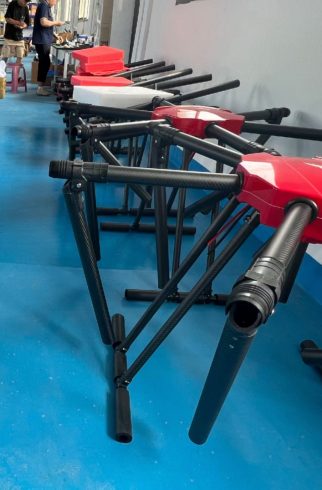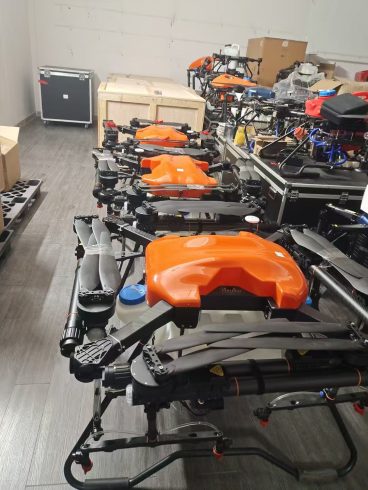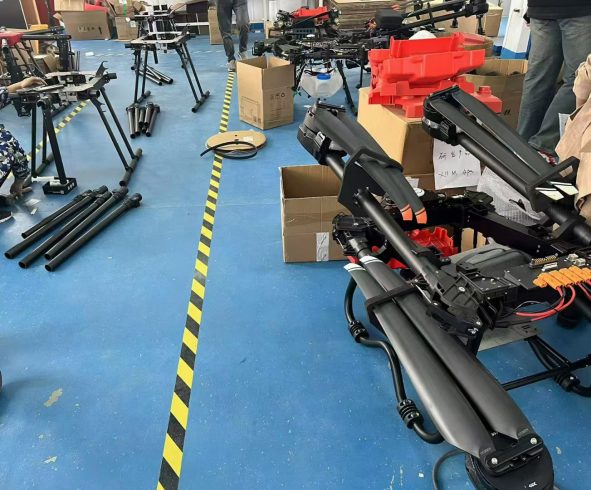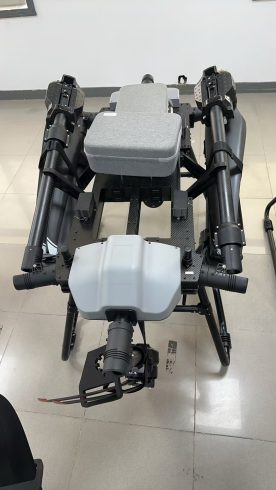![图片[1]-Powering Precision: Mastering Battery Management for Agricultural Spray Drones-msoen](https://www.msoen.com/wp-content/uploads/2025/03/bb40018735be.webp)
![图片[2]-Powering Precision: Mastering Battery Management for Agricultural Spray Drones-msoen](https://www.msoen.com/wp-content/uploads/2025/03/f7d159600e19.webp)
![图片[3]-Powering Precision: Mastering Battery Management for Agricultural Spray Drones-msoen](https://www.msoen.com/wp-content/uploads/2025/03/f638dd8a5561.webp)
Optimize the performance and lifespan of spray drones with expert battery management strategies. Learn about charging techniques, environmental impacts, and maintenance practices to maximize uptime and efficiency.
Powering Precision: Mastering Battery Management for Agricultural Spray Drones
Agricultural spray drones are only as reliable as their power source. With the growing demand for precision crop management, battery management has become a critical factor in ensuring uninterrupted operations, cost efficiency, and safety. Poor battery practices can lead to unexpected downtime, reduced spray coverage, and even safety hazards. This article dives into the essentials of battery management for spray drones, offering actionable insights to extend battery life, optimize performance, and reduce operational risks.
Why Battery Management Matters for Spray Drones
Spray drones face unique energy demands:
- High Payloads: Liquid pesticides or fertilizers add weight, increasing power consumption.
- Variable Workloads: Extended flight times for large fields drain batteries faster.
- Environmental Stressors: Extreme temperatures and moisture degrade battery health.
Effective battery management directly impacts:
- Flight Time: Poorly maintained batteries reduce operational efficiency.
- Costs: Premature battery replacement raises expenses.
- Safety: Overheating or unstable batteries pose fire risks.
Key Battery Types for Spray Drones
Understanding battery chemistry is crucial for selection and care:
- LiPo (Lithium Polymer):
- Pros: Lightweight, high energy density, ideal for short to medium flights.
- Cons: Sensitive to overcharging and temperature fluctuations.
- LiFePO4 (Lithium Iron Phosphate):
- Pros: Longer lifespan (500+ cycles), thermal stability, safer for harsh environments.
- Cons: Heavier, slightly lower energy density.
- Solid-State Batteries (Emerging):
- Pros: Higher safety, faster charging, extended range.
- Cons: Currently expensive and limited availability.
Recommendation: LiFePO4 batteries are preferred for spray drones due to durability and safety in outdoor conditions.
Daily Battery Maintenance Practices
- Pre-Flight Inspections
- Visual Checks: Look for swelling, leaks, or damaged connectors.
- Voltage Testing: Use a multimeter to ensure cells are balanced (difference ≤0.1V).
- Weight Verification: Ensure batteries meet manufacturer weight specifications.
- Charging Best Practices
- Use Certified Chargers: Avoid third-party chargers to prevent overvoltage.
- Charge Rate: Stick to 1C charging (e.g., 5A for a 5Ah battery) to avoid heat buildup.
- Temperature Control: Charge at 10–25°C; avoid charging below 0°C or above 35°C.
- Post-Flight Care
- Storage Charge: Store batteries at 40–60% capacity to prolong lifespan.
- Cooling Down: Let batteries cool to room temperature before storage.
- Monthly Cycling: Fully discharge and recharge batteries every 30 days to recalibrate capacity readings.
Environmental Considerations
- Temperature Management
- Cold Climates: Use battery warmers or insulating sleeves to maintain ≥10°C during flight.
- Hot Climates: Schedule flights during cooler parts of the day; use heat-resistant battery sleeves.
- Humidity and Moisture
- Sealed Containers: Store batteries in IP67-rated cases when not in use.
- Corrosion Prevention: Apply dielectric grease to terminals after cleaning.
- Altitude Effects
- Thin Air: Drones consume 10–15% more power at high altitudes. Adjust battery loads accordingly.
Advanced Battery Management Strategies
- Smart Battery Systems
- Built-In Diagnostics: Monitor health metrics (SOH, SOC) via Bluetooth/Wi-Fi.
- Automatic Balancing: Ensure cell voltages remain balanced during flight.
- Swarm Charging Stations
- Automated Docking: Fleets of drones recharge simultaneously using solar-powered stations.
- Fast-Charging Tech: Reduce downtime with 30-minute charge cycles (for LiFePO4 batteries).
- Predictive Analytics
- AI Algorithms: Forecast battery degradation and schedule replacements proactively.
- Usage Logs: Track flight patterns to optimize battery allocation per task.
Troubleshooting Common Battery Issues
- Sudden Voltage Drops
- Causes: Aged cells, internal shorts.
- Solution: Replace batteries exceeding 2 years or 300 cycles.
- Inconsistent Flight Times
- Causes: Partial state of charge (PSoC) cycling.
- Solution: Avoid frequent shallow discharges; use full discharge/charge cycles.
- Overheating During Flight
- Causes: High payload, excessive throttle.
- Solution: Reduce spray duration or upgrade to high-discharge batteries.
The Future of Drone Battery Technology
Innovations on the horizon promise transformative changes:
- Graphene Batteries: 5x faster charging and double energy density.
- Hydrogen Fuel Cells: Ultra-long range for multi-hour flights.
- Self-Healing Electrolytes: Extend lifespan by repairing micro-cracks.
Conclusion
Effective battery management is the unsung hero of spray drone efficiency. By selecting the right chemistry, adhering to rigorous maintenance routines, and leveraging smart technologies, farmers can unlock longer flight times, lower costs, and safer operations. As battery tech evolves, proactive management will become even more critical to sustaining precision agriculture’s growth. Treat your drone’s battery like a strategic asset—invest in its care, and it will fuel your farm’s success for years to come.
Target Keywords: battery management for spray drones, agricultural drone battery care, LiFePO4 drone batteries, drone charging best practices, battery lifespan optimization.












暂无评论内容